Aphids are small insects that feed on plants. They cause damage by sucking plant juices from leaves and stems in your terrace garden. Learn more about these pests! You may have seen them before, but did you know they could be harmful? Find out what you should do if you spot aphids in your garden! Do you know what causes aphid infestations? Read our article to find out! and learn how to control them!
Training farmers in integrated pest management is exceedingly important to protect them during the use of pesticides.
M. S. Swaminathan
It’s a common saying that before learning any new language, we should first know the bad words so that whenever someone tries to mock us, we will be well informed. Before we start growing new plants on our terraces, we need to know what common pests are likely to attack them. This way, we can make an informed decision about how to prevent and get rid of pests before they start destroying our crops.
One notorious pest among the many is the tiny sap-sucking aphids that damage plants. Especially the vegetable and fruit varieties In this article, we will learn in detail about the characteristics, life cycle, prevention, biological control, and other methods of prevention.
Aphids the gardeners enemy.
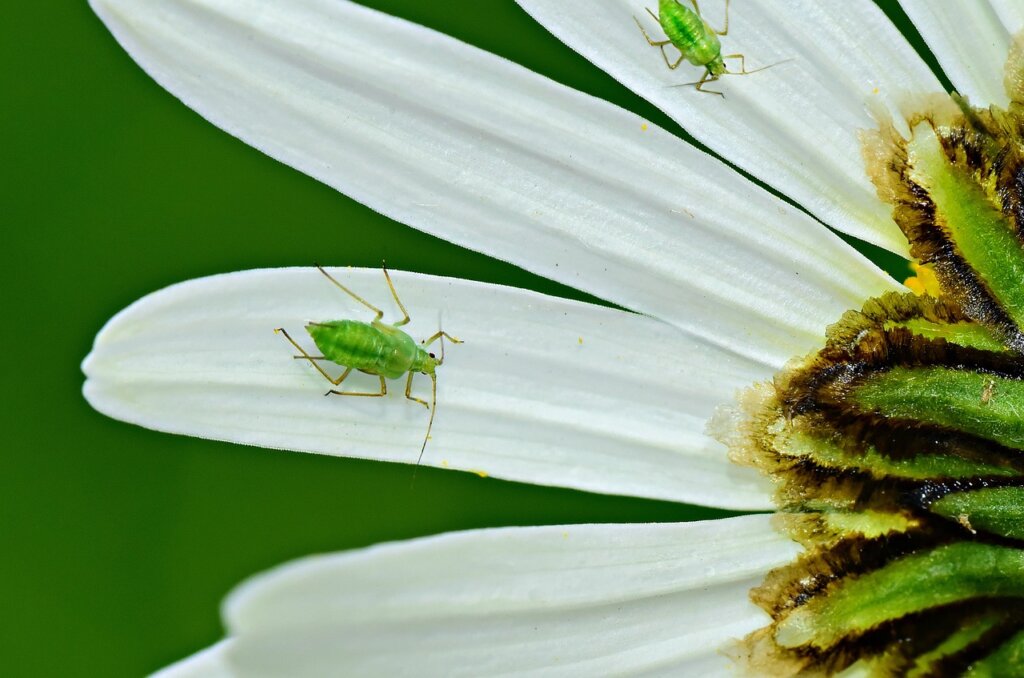
Aphids belong to the Animalia kingdom, a phylum of the Arthropoda class of insects. With the scientific name Aphididea(Wikipedia)
Aphids are known in Hindi as “keetmari” (कीटमारी). This word comes from the Hindi words “keet” (कीट), which means “insect,” and “Mari” (मारी), which means “to damage or harm.” Together, the word “keetmari” literally means “damaging insect” and refers specifically to aphids.
Aphids in Kannada are known as “ಎಳೆಗೂಡಿ” (ēle gūḍi).
characterists of Aphids
Most aphids have soft bodies, which may be green, black, brown, pink, or almost colorless. making it sometimes difficult to see without a thorough and close examination.
Aphids have antennae with two short, broad basal segments and up to four slender terminal segments. They have a pair of compound eyes, with an ocular tubercle behind and above each eye, made up of three lenses (called triommatidia).
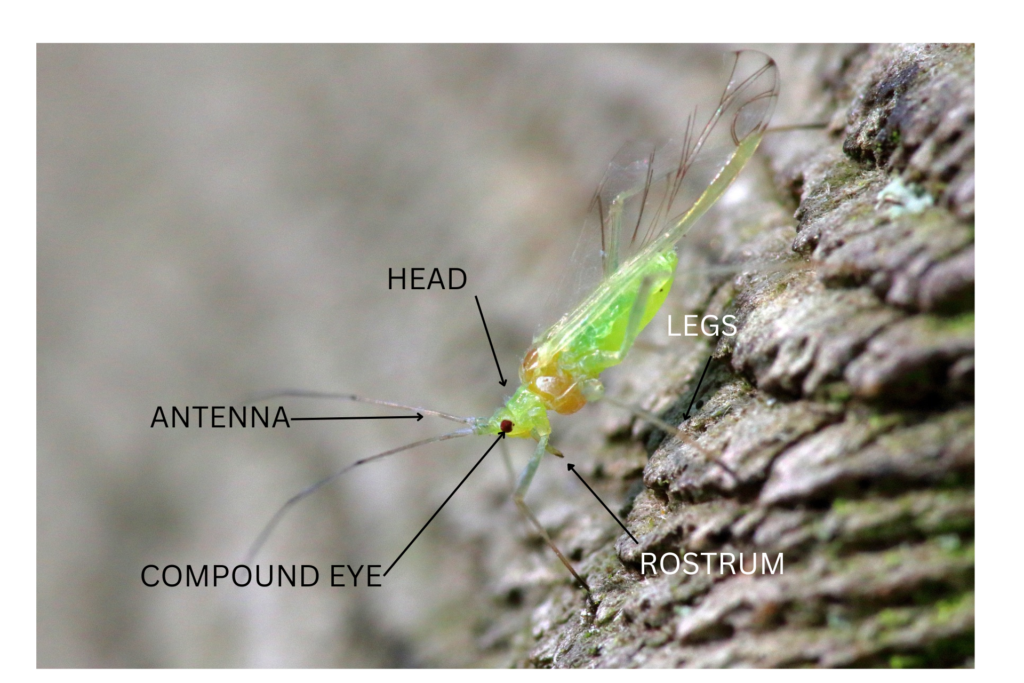
They feed on sap using sucking mouthparts called stylets, enclosed in a sheath called a rostrum, which is formed from modifications of the mandible and maxilla of the insect mouthparts.
When host plant quality becomes poor or conditions become crowded, some aphid species produce winged offspring (alates) that can disperse to other food sources.
Many aphid species are monophagous (that is, they feed on only one plant species). Others, like the green peach aphid, feed on hundreds of plant species across many families. About 10% of species feed on different plants at different times of the year.
Cooler temperatures or significant rainfall. Slow rates of aphid development, while warm and relatively dry conditions favor rapid population build-up.
life cycle of aphids
The life cycle of aphids varies depending on the species, but most aphids go through a process called “parthenogenesis,” where females give birth to live young without fertilization by males. This allows aphids to reproduce quickly and in large numbers.
Aphids typically have four stages in their life cycle: egg, nymph, adult, and winged adult. The egg stage is the overwintering stage, where the aphid remains dormant until spring. In the spring, the egg hatches into a nymph, which looks like a smaller version of the adult aphid.

As the nymph grows, it will molt several times, shedding its exoskeleton to reveal a new, larger one underneath. Once the nymph reaches adulthood, it will begin reproducing and giving birth to live young.
There are over 4,000 known species of aphids, and they can be found on a wide variety of plants. Some common types of aphids include:
- Green peach aphids, which are pale green in color and typically found on fruit trees
- Melon aphids, which are yellow or green and typically found on cucumbers and melons,
- Black bean aphids, which are shiny black and typically found on beans and other legumes
- Cabbage aphids, which are yellow or green and typically found on cruciferous vegetables
- Rose aphids, which are pink or red and typically found on roses and other flowering plants,
Aphids can also be classified based on their behaviour and the plants they feed on. For example, some aphids are specific to a particular plant species, while others are more generalists and can feed on a wide variety of plants. Some aphids are also migratory, moving from one plant to another as food sources become scarce.
In some cases, the aphid will develop wings and become a winged adult. Winged aphids can fly to new plants and start new colonies, allowing the aphid population to spread and potentially causing damage to a larger area.
The life cycle of aphids can be completed in as little as one week, allowing the population to grow rapidly. In ideal conditions, an aphid population can double in size every three to five days. This rapid reproduction rate is one of the reasons why aphids can be such a damaging pest.
Ants and aphids have a symbiotic relationship.
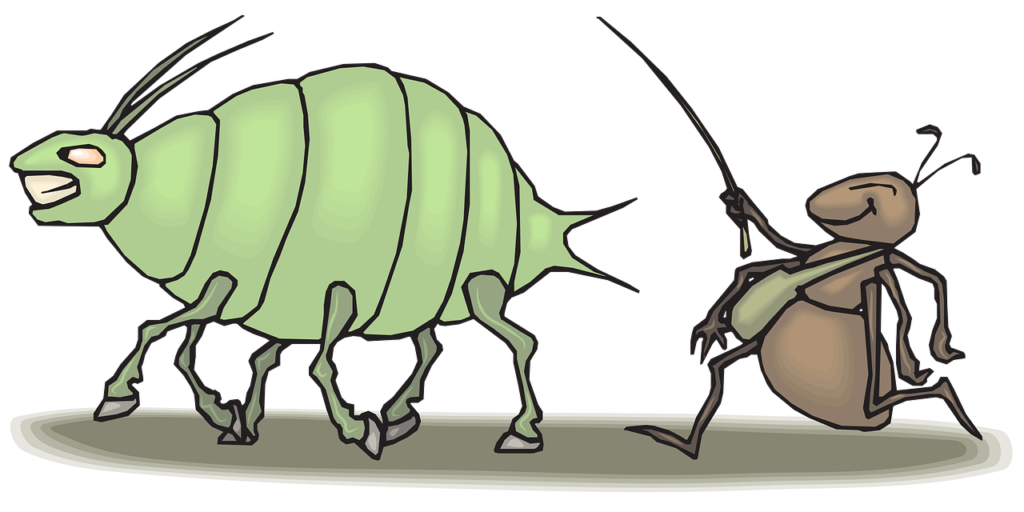
Ants and aphids are two different types of insects. Ants are social insects that live in colonies and are known for their organized behavior and complex social structures. They are also known for their ability to communicate with each other using chemical signals called pheromones. They are often found in large numbers and can cause damage to crops.
Some species of ants live in harmony with aphids. The ants take care of and protect the aphids in exchange for the sweet, sugary substance that the aphids make when they eat plant sap. This substance is called honeydew, and the ants will often “milk” the aphids by stroking them with their antennae to stimulate honeydew production.
This symbiotic relationship should be understood. So, whenever you notice a new appearance of ant colonies in your garden, keep a close eye out for aphids, especially under the leaves, as some green aphids sync with the color of the leaf and are difficult to see unless given a closer look.
Biological control of aphids by ladybird.
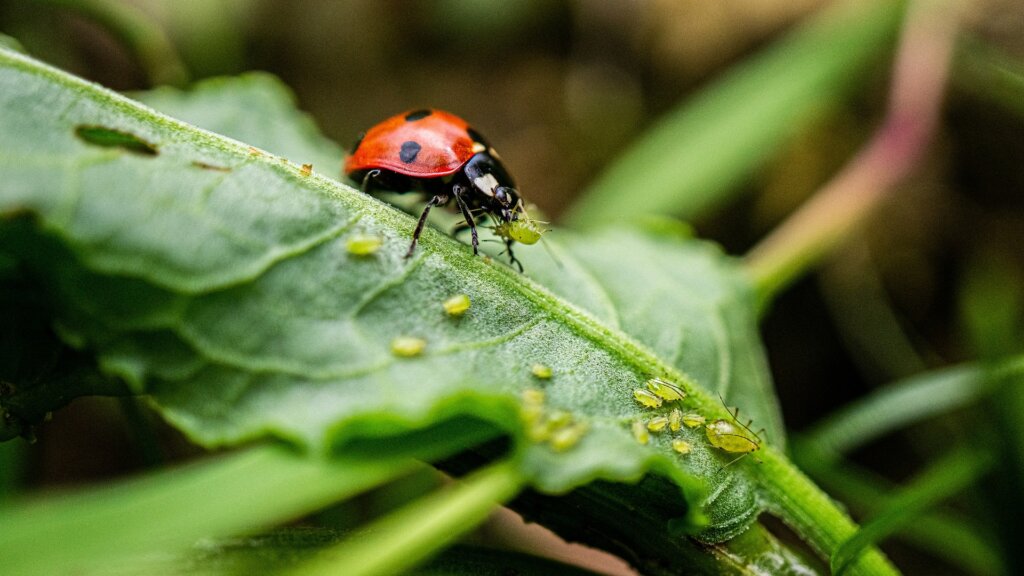
ladybug eating out gardeners enemy.
Aphids and ladybugs, also known as ladybirds, have a relationship known as predation. This means that ladybugs feed on aphids and help to control their populations.
Ladybugs are natural predators of aphids, and they are often used as a biological control method for controlling aphid infestations. Ladybugs have big appetites and can eat a lot of aphids. This makes them a good way to control aphid populations and keep plants from getting hurt.
In addition to feeding on aphids, ladybugs also lay their eggs near aphid colonies. When the eggs hatch, the ladybug larvae will feed on the aphids, further reducing the population.
Overall, the presence of ladybugs can help keep aphid populations in check and protect plants from damage. If you have an aphid infestation in your garden, introducing ladybugs can be an effective way to control the problem naturally.
Plants that attract ladybugs to your garden
natural security guards for your terrace garden “Ladybirds”, also known as ladybugs or lady beetles, are often considered beneficial insects because they feed on a wide range of plant-eating pests, including aphids, scale insects, and mites. To attract ladybirds to your garden, you can plant flowering plants that produce nectar and pollen, as ladybirds are attracted to these sources of food.
Some examples of plants that are known to attract ladybirds include
dill,
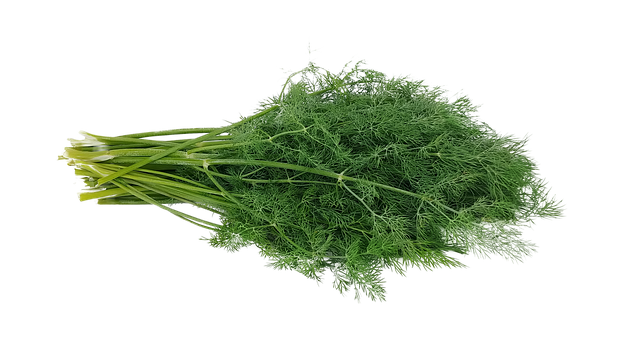
fennel,
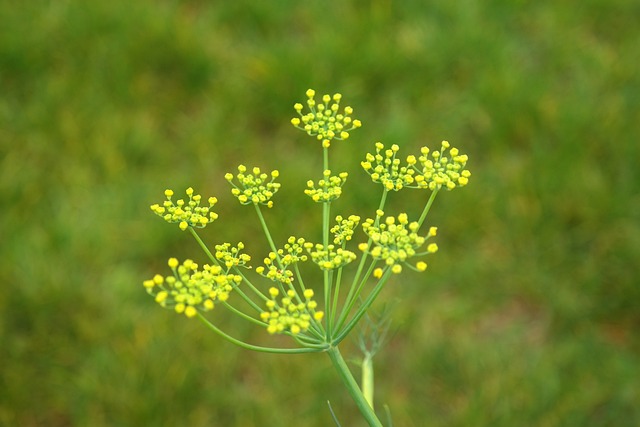
cilantro,
yarrow, and
dandelion.
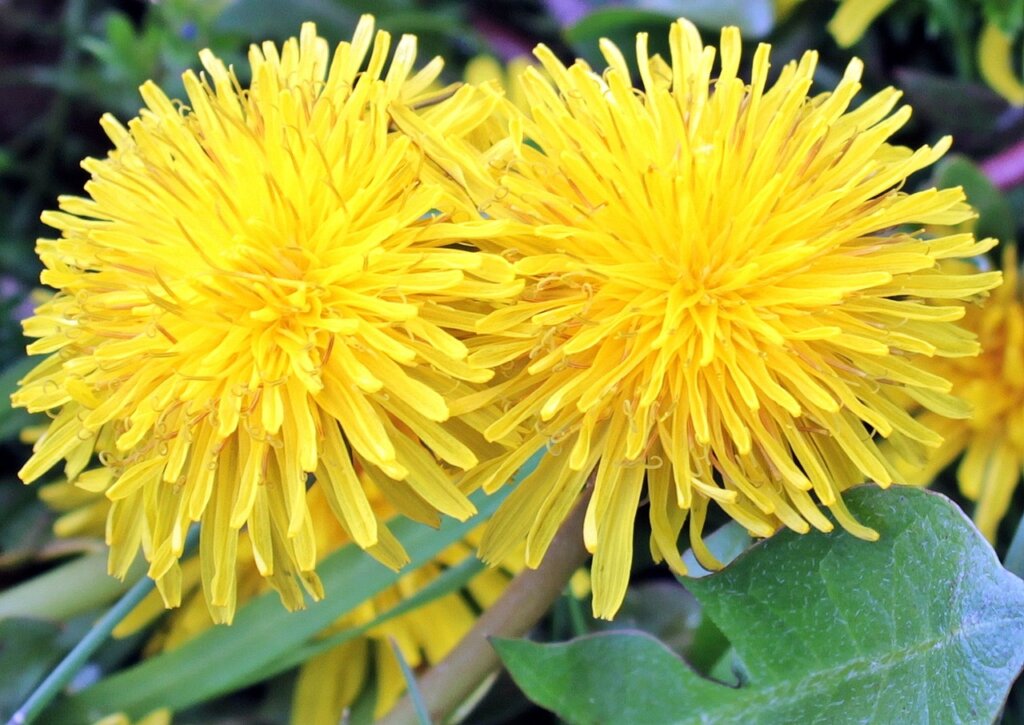
In addition to providing food, these plants can also provide shelter for ladybugs, as they often like to hide in the leaves or stems of plants. You can also try using ladybird houses or other types of artificial habitats to provide ladybirds with a place to live and reproduce in your garden. We can grow ladybird-attracting plants.
Neem a natural pesticide for Aphids.
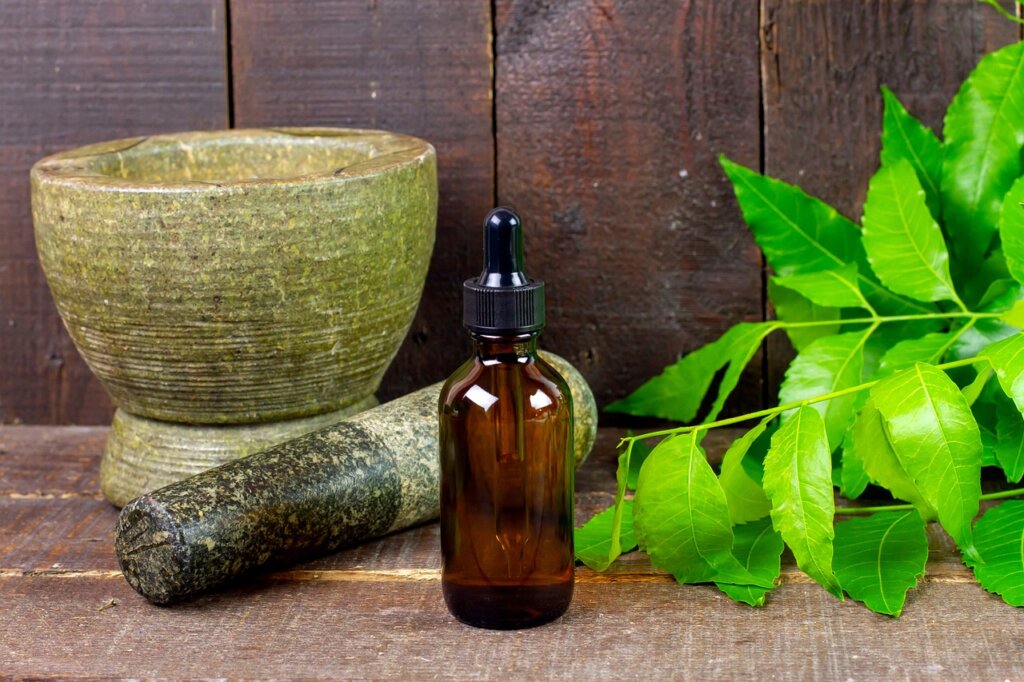
Neem is a tree that is native to India and is often used in traditional medicine. It is also used as an insecticide because many of its compounds are toxic to insects, including aphids. Neem oil, which is extracted from the seeds of the neem tree, is often used as a natural way to control aphids and other insects.
It works by making it hard for insects to reproduce and eat, which can kill them in the end. Because neem oil is natural and relatively safe for humans and other animals, it is a popular choice for organic pest control.
It is also used as an insecticide because many of its compounds are toxic to insects, including aphids.
Because neem oil is natural and relatively safe for humans and other animals, it is a popular choice for organic pest control. And neem is one of the insecticides that thegiftsnetwork recommends. In the production of a toxic-free pesticide, neem forms an important backbone for organic pest control.
How to use neem oil for aphids control.
Neem oil is a broad-spectrum, 100% safe natural pesticide. Use a water-soluble neem oil.
Pour 5 ml of neem oil in 1 liter of water and spray over and below leaves so that the lower surface of the leaf is generally where aphids hide.
For prevention: one spray per week
For infestation control: spray twice a week
Nasturtium is an aphid attractor.
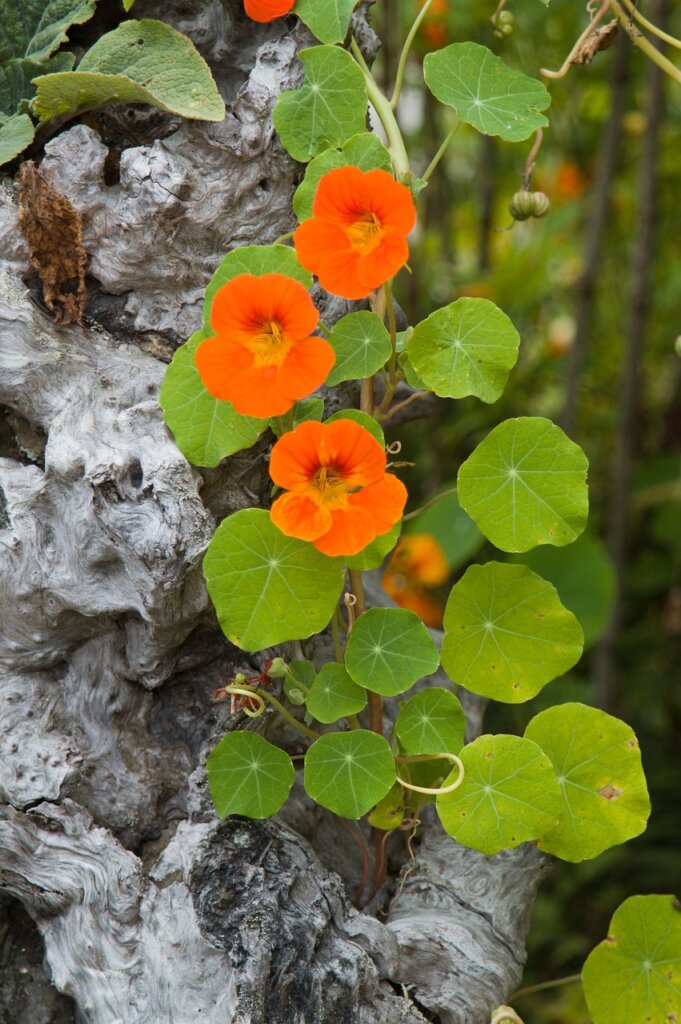
Nasturtium is a flowering plant that is often grown in gardens as an ornamental plant. Its flowers and leaves are edible and have a spicy, peppery flavor.
To control aphids on nasturtium plants, there are a few different options. One is to use a natural predator such as ladybugs, which feed on aphids which we discussed above.
Another option is to use nasturtium as a sacrificial plant. it is common for nasturtium plants to attract aphids. In fact, some gardeners plant nasturtiums specifically to help control aphid infestations on other plants in their gardens. This is because nasturtiums produce chemicals that can attract aphids and other insects.
In these situations, the aphids may be attracted to the nasturtiums as a food source. When a plant becomes infected, it is cut off and discarded.
Beauveria bassiana as a natural pesticide.
Beauveria bassiana is a type of fungus that is commonly used as a biological control agent against pests such as aphids. When applied to plants, the fungus can infect and kill aphids, effectively controlling their populations without the use of chemical pesticides. This can be beneficial for the environment as well as for the plants themselves, as it can help protect them from damage caused by aphid infestations.
In addition to controlling existing aphid infestations, there are several steps you can take to prevent them from occurring in the first place. These include:
- Planting aphid-resistant varieties of plants
- Keeping your garden clean and free of weeds
- Avoid over-fertilizing your plants, as this can make them more attractive to aphids.
- Regularly inspecting your plants for signs of aphids and treating infestations early on
By following these steps and taking prompt action to control aphid infestations, you can protect your plants and keep your garden healthy and thriving.
I hope this article has helped you learn in-depth and to make an informed decision about identifying and also the natural ways to destroy and save your terrace garden, and if you have any suggestions or corrections, please leave them in the comments section.
Thegiftsnetwork.com
what is thegiftsnetwork, the idea behind its formation? – thegiftsnetwork.com
